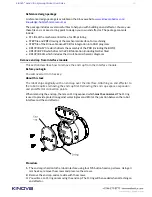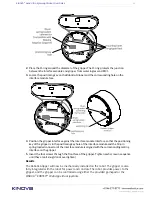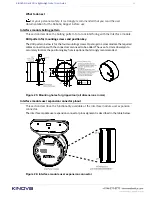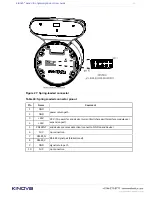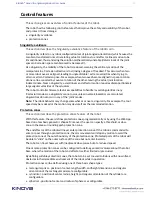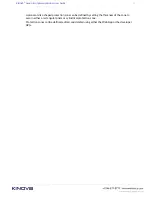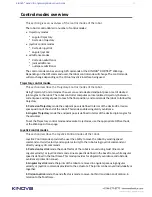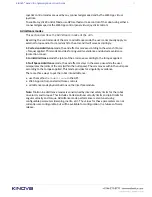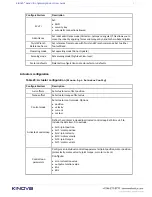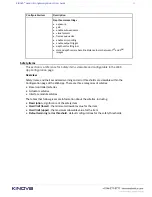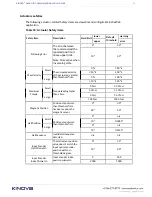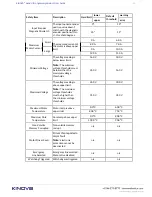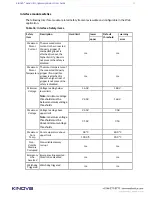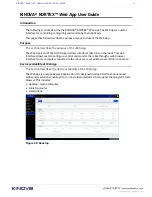
KINOVA
®
Gen3 Ultra lightweight robot
User Guide
73
Trajectory
A specific path in the Cartesian robot workspace (e.g. a straight line trajectory for the end
effector) can be defined by the user.
Twist
Generalized velocity vector, which is a combination of translationnal velocity and
rotational velocity.
Wrench
Generalized force (vector which is a combination of linear force and torques).
Vector
Mathematical representation of physical quantities that have both magnitude and
direction, expressed in terms of a Reference Frame.
X DoF
Undefined number of degrees of freedom.
Features, components and functionalities
Actual Position
The position (or location) of the tool frame point. Note that this will not be exactly the
same as the requested position due to a multitude of un-sensed errors (such as link
deflection, transmission irregularity, tolerances in link lengths, etc.).
Admittance
Used in several control modes wherein the arm is moved directly by the user touching
the arm and applying force and torque to the end effector, the wrist, or to individual
joints.
Base
Refers to the stationary base structure of a robot arm that supports the first arm joint.
Base support
The stable platform to which the base is attached
Continuous Path
Describes the process whereby a robot is controlled over the entire path traversed, as
opposed to a point-to-point method of traversal. Used when the end-effector smooth
trajectory is of vital importance to provide the constant motion required by applications
such as spray painting.
End Effector
The device at the end of a
robotic
arm, designed to directly interact with the environment,
is known as the end effector (EE).
In-motion
Describes the operations/computations done while the robot is moving (i.e. inverse
kinematics and trajectory generation).
Joint
Section of the manipulator system which allows one rotational degree of freedom.


